When painting on fabric you need materials with exceptional quality, versatility, durability and adhesion.
You can apply color to textiles using a wide variety of application techniques for a range of different end results. Choose your materials and technique to suit your fabric. Liquitex Professional Soft Body Acrylic is our most versatile paint for textile use and our Fabric Medium ensures a lasting flexible bond between paint and fiber. None of these materials require heat setting, steaming or chemical fixing.
GENERAL TIPS
- Applying thick paint to large areas will tend to stiffen fabric
- Loose fabric weave allows more of the color to penetrate the fibers
- Colors will dry lighter than they appear when first painted
- Transparent and semi-opaque paint colors work best and dry with a softer finish
- Titanium White and all iridescent/metallic colors may stiffen fabric
- All colors are permanent - no heat setting required
SUITABLE TEXTILES
Cotton, cotton-poly blends, woven, knitted, felt, terry cloth, silk, velvet, velveteen, corduroy, flannel, suede, leather and most synthetics.
BEFORE YOU START
- Pre-wash new fabric to remove sizing (it interferes with adhesion) and leave to dry
- Place a protective layer on your work surface to prevent the fabric sticking and stretch sweatshirts with cardboard for best paint application
- Test your technique on a separate piece - each fabric has a different absorbency and will affect paint handling
- Adjust paint to desired consistency using one of our professional mediums. For soft and flexible results always use Liquitex Fabric Medium, adding distilled water if necessary - do not over-thin
DRYING TIME
Varies depending on surface, application and humidity. Paint will dry to touch in 5 minutes to 2 hours
AFTERCARE
- After paint fully dries, wait at least 4 days before washing
- Hand wash and hang dry is best. Do not pre-soak or use hot water. Wash items inside out
- If you want to machine wash, use the permanent press/gentle cycle on a low temperature
- Dry cleaning machines that spin-dry fabric at room temperature are recommended. Dry cleaning suede is acceptable. Spot cleaning solutions should be avoided or used sparingly
- If you need to iron in the future, use the low synthetic heat setting and use a pressing cloth or iron on reverse side of fabric
TECHNIQUES
AIRBRUSH/SPRAY APPLICATION
MATERIALS
Soft Body + Airbrush Medium / Acrylic Ink (straight from bottle)
DIRECTIONS
- If using Soft Body, mix 1 part Soft Body with 1 part Airbrush Medium and add more Airbrush Medium as needed to achieve desired consistency
- Colors must permeate cloth and be seen as ghost image on reverse side to be permanent
BLOCK PRINTING
MATERIALS
Matte Varnish, Heavy Body Acrylic, Slow-Dri Gel Additive
DIRECTIONS
- Coat a linoleum or wood block with varnish. While varnish is wet, sift finely shredded fabric (flocking) onto it and leave to dry. When dry this absorbent surface will hold paint for application
- Mix Heavy Body with up to 25% Slow-Dri and spread onto the block with a soft foam roller
- Wet the fabric and place the block face down onto the cloth pressing firmly and evenly
- Stretch the fabric on a padded surface to help facilitate printing
- Use absorbent, medium-to-heavy weight fabrics without deep texture for best results
BRUSHWORK
MATERIALS
Soft Body / Heavy Body Acrylic / Acrylic Ink, Fabric Medium
DIRECTIONS
- Mix your choice of color with Fabric Medium for a more flexible feel to finished painting
- To extend workable time, mix color with Slow-Dri
DRAWING ON FABRIC
MATERIALS
Heavy Body Acrylic / Optional - Gloss Gel / Gloss Heavy Gel / Matte Gel
DIRECTIONS
- Screw a plastic cake decorator tip onto a tube of Heavy Body Acrylic and squeeze apply. Play around with nozzle thicknesses to create different lines
- Mix color with a gel medium to adjust consistency
- Tightly woven cotton and silk will achieve the richest colors
- For softer edges, pre-wet fabric with diluted Flow-Aid Additive
- A hot wax resist may be used for hard edges. Remove wax resist by dry cleaning
SILK-SCREEN PRINTING
MATERIALS
Soft / Heavy Body Acrylic + Slow-Dri Fluid Additive - Gloss Medium (optional)
DIRECTIONS
- For heavyweight fabrics use Soft Body, lightweight fabrics use Heavy Body
- Mix up to 25% Slow-Dri into color to slow drying time
- Squeegee paint through screen. Wash screen with water immediately after use
- Gloss Medium can be used as a permanent screen block solution - apply directly to screen
FABRIC STAMPING
MATERIALS
Soft / Heavy Body Acrylic
DIRECTIONS
- Paint stamp with color and press painted side onto surface using even pressure; allowing absorption into fabric
FABRIC STENCILING
MATERIALS
Soft / Heavy Body Acrylic
DIRECTIONS
- Use either ready-made stencils or cut from heavy paper, oak tag, acetate or frisket films. Use spray stencil adhesives if necessary
- Apply paint with polyurethane foam dauber, rag or stencil brush
- Do not thin paint as it may bleed and do not force paint under the edge of stencil
WATERCOLOR EFFECTS
MATERIALS
Acrylic Ink / Soft Body Acrylic
DIRECTIONS
- If using Soft Body, thin with distilled water to desired consistency
- Lightweight fabrics allow paint to spread quickly
- Multiple applications can be painted over once dry without picking up underlying colors

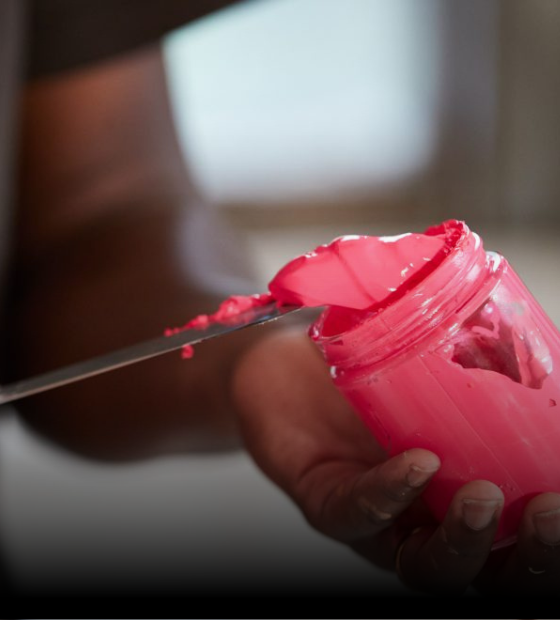
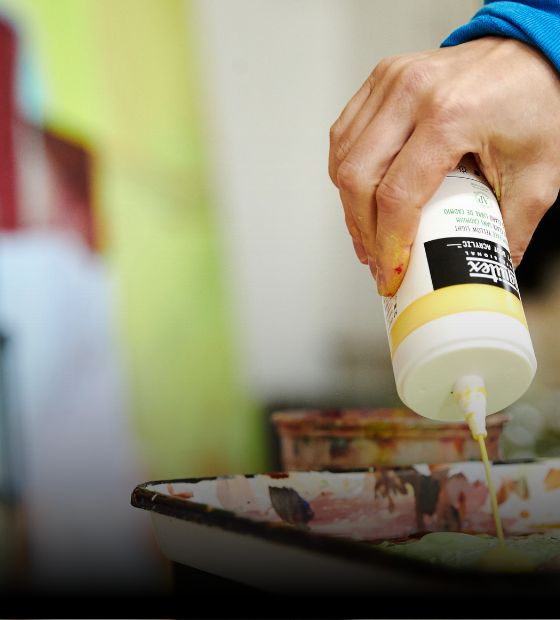
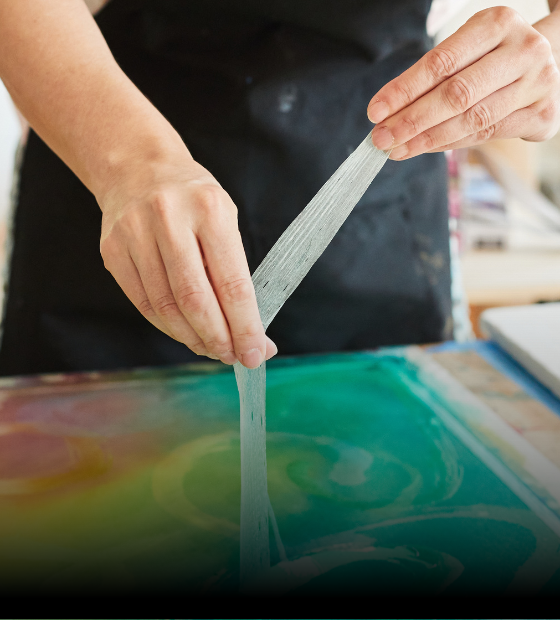
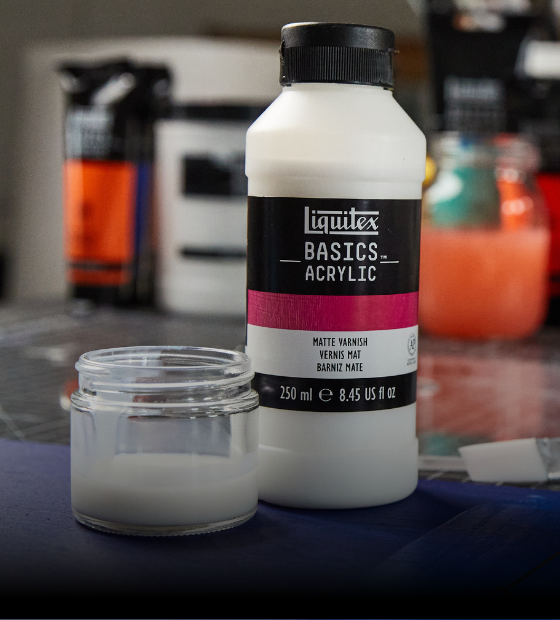
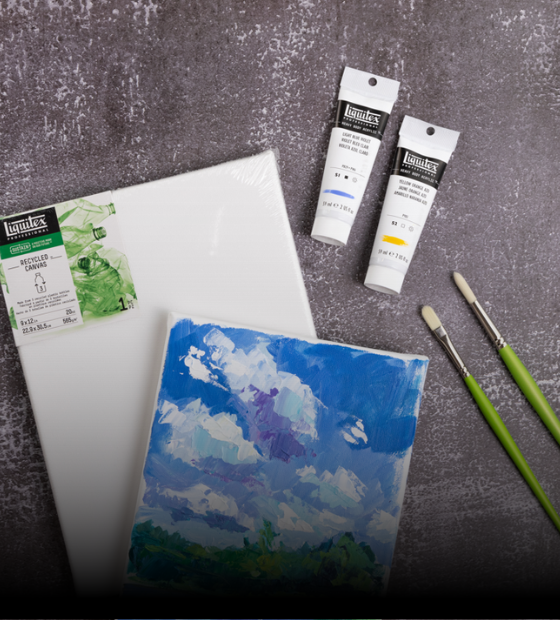
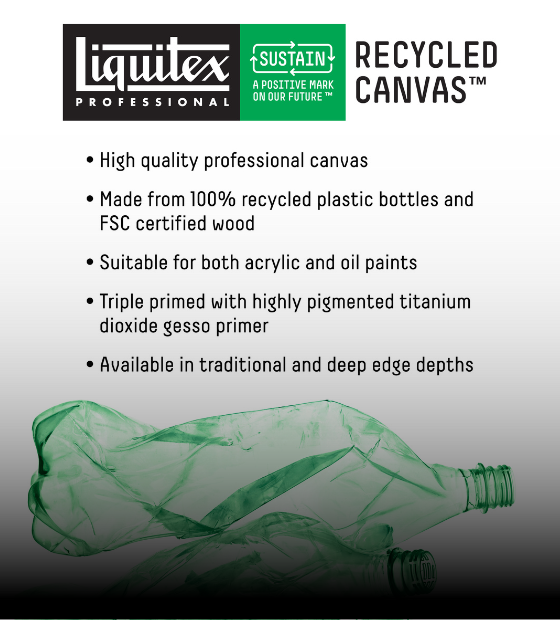
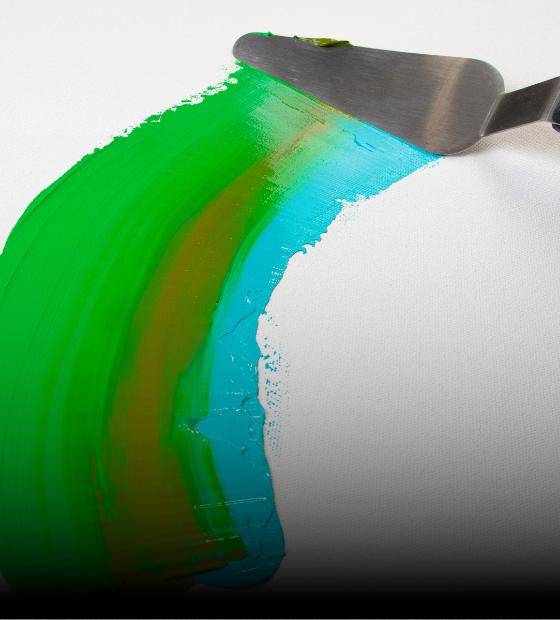
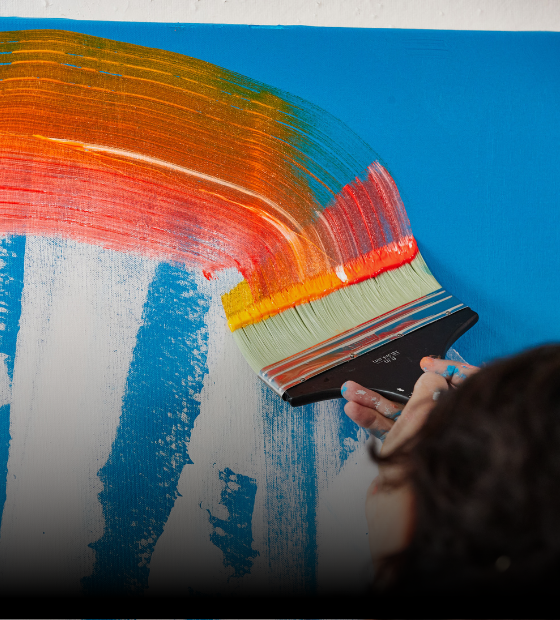

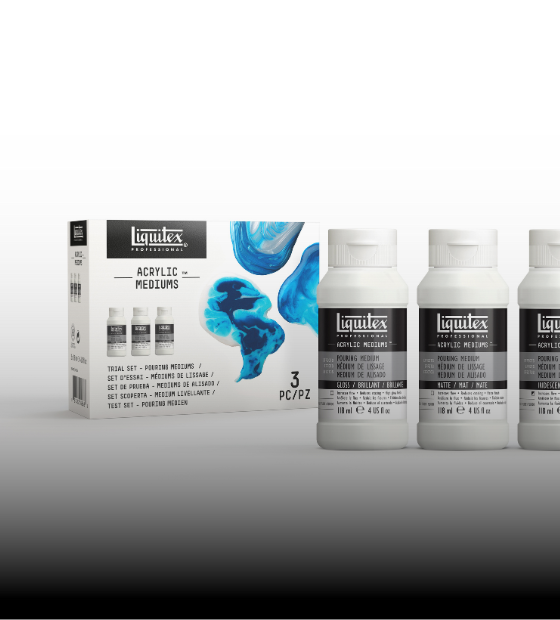
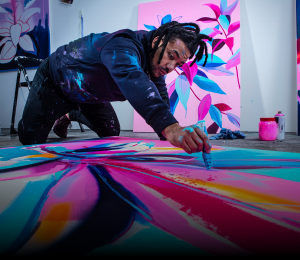
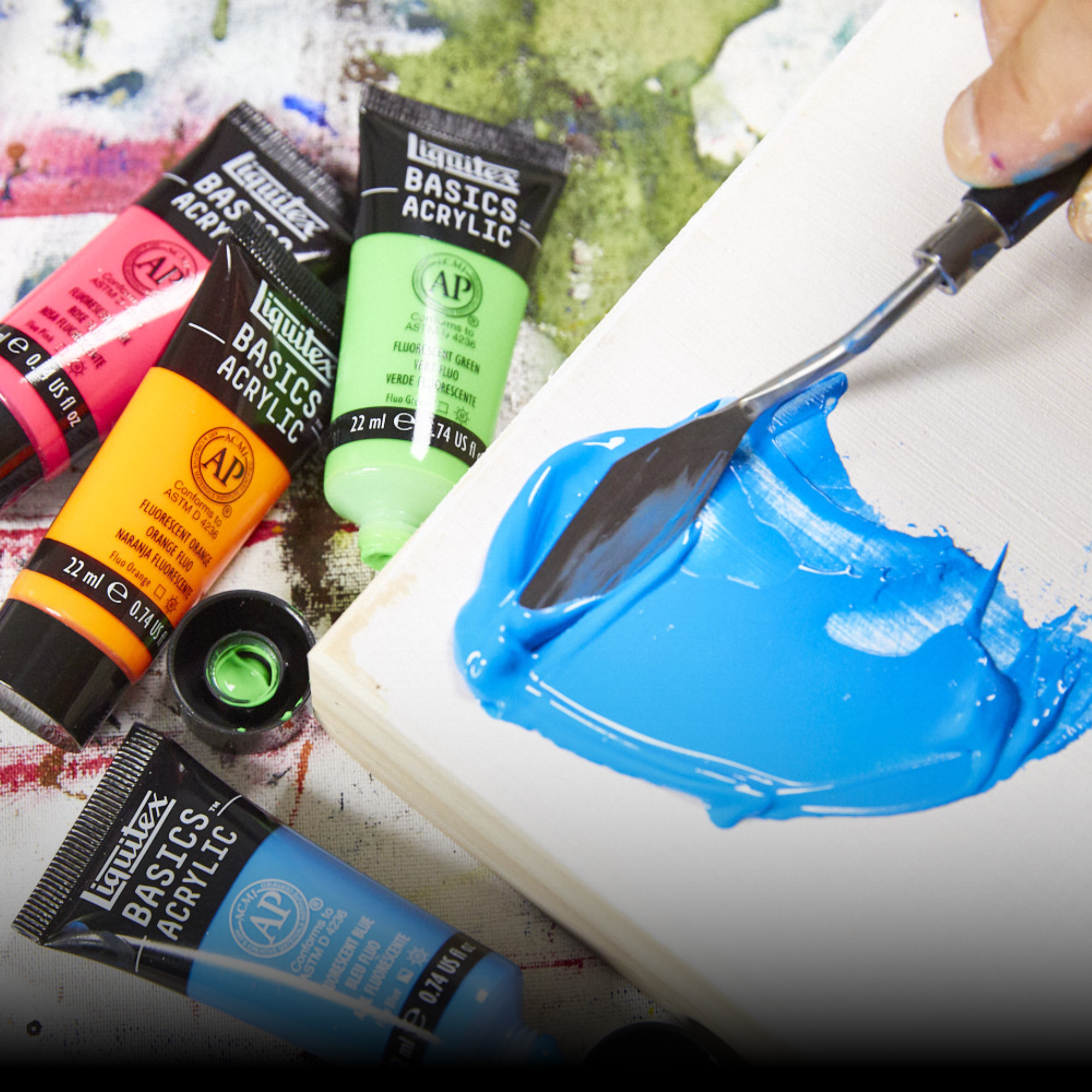
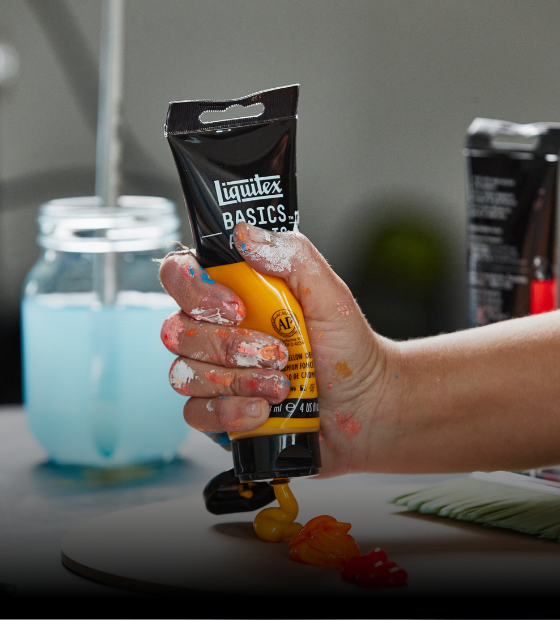
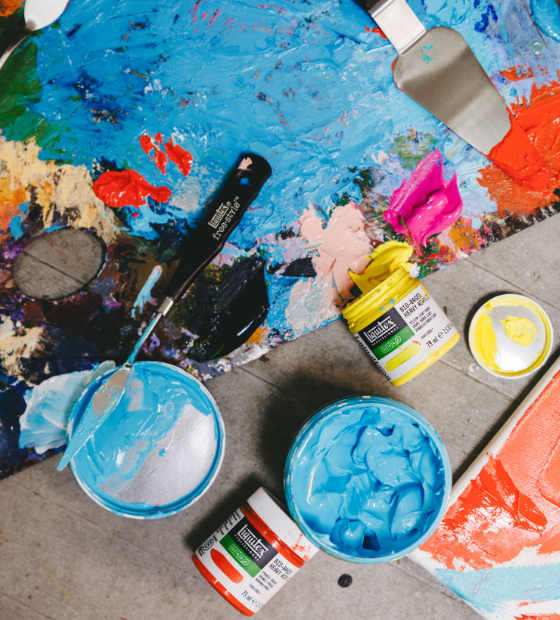
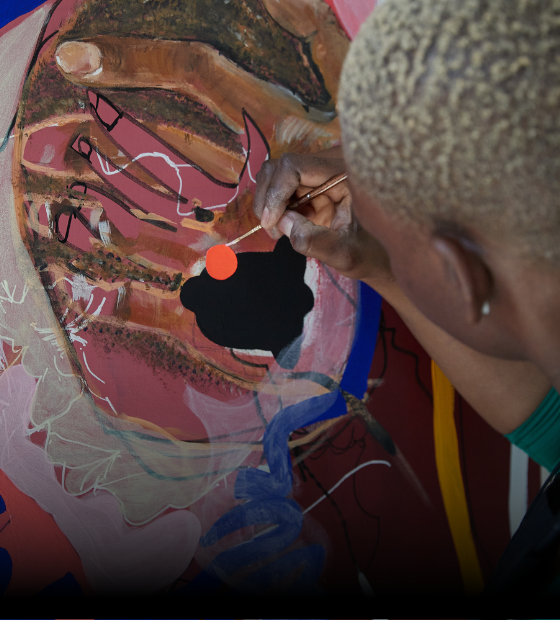
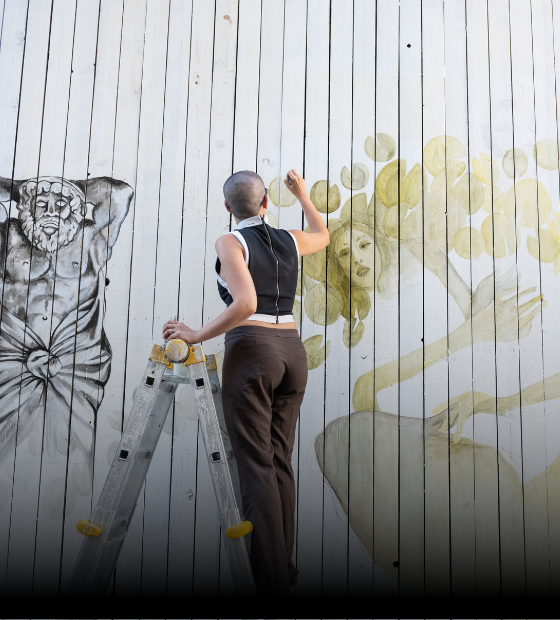
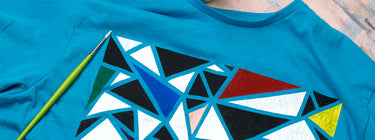
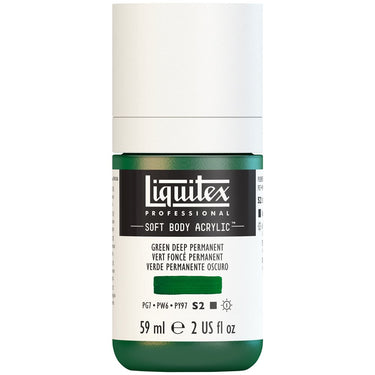
![LQX SOFT BODY ACRYLIC 350 GREEN DEEP PERMANENT [WEBSITE SWATCH]](http://www.liquitex.com/cdn/shop/files/71878_375x375_crop_center.jpg?v=1693228657)
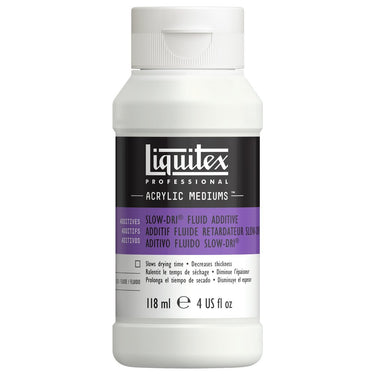
![LQX PRO MEDIUMS SLOW DRI FLUID ADDITIVE [WEBSITE SWATCH]](http://www.liquitex.com/cdn/shop/files/72043_375x375_crop_center.jpg?v=1693188362)

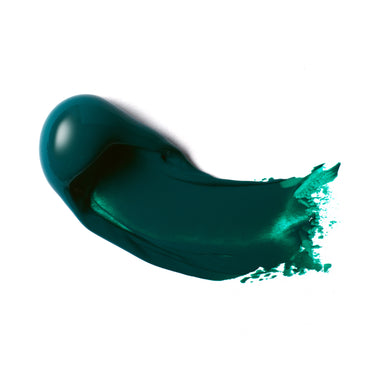
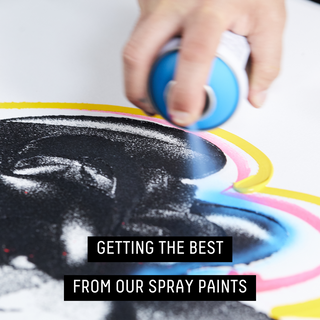
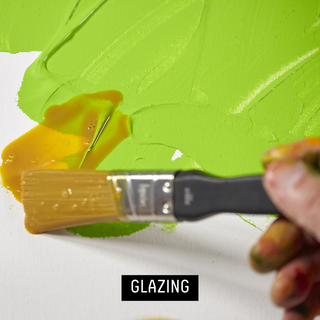
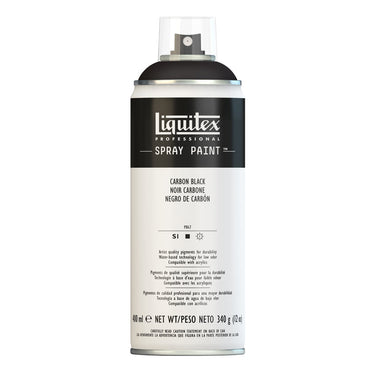

![LQX ACRYLIC MARKER SET 6X 2-4MM CLASSICS [CONTENTS] 887452001225](http://www.liquitex.com/cdn/shop/files/68762_375x375_crop_center.jpg?v=1707320720)
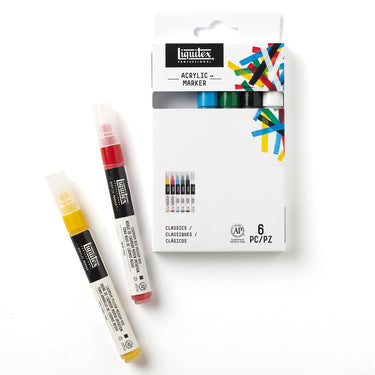
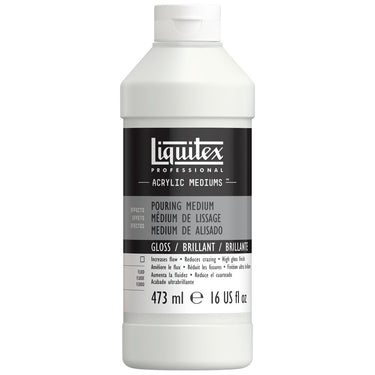
![LQX PRO MEDIUMS POURING MEDIUM [WEBSITE SWATCH]](http://www.liquitex.com/cdn/shop/files/72030_375x375_crop_center.jpg?v=1705607484)
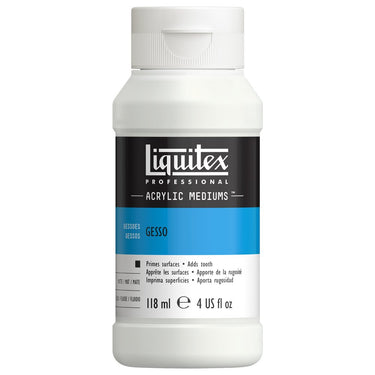
![LQX PRO MEDIUMS GESSO [WEBSITE SWATCH]](http://www.liquitex.com/cdn/shop/files/72009_375x375_crop_center.jpg?v=1693098231)
![LQX BASICS 6x118ML SET 887452059226 [SET WITH CONTENTS 2]](http://www.liquitex.com/cdn/shop/files/130398_375x375_crop_center.jpg?v=1707324060)
![LQX BASICS 6x118ML SET 887452059226 [FRONT]](http://www.liquitex.com/cdn/shop/files/130396_375x375_crop_center.jpg?v=1706797707)
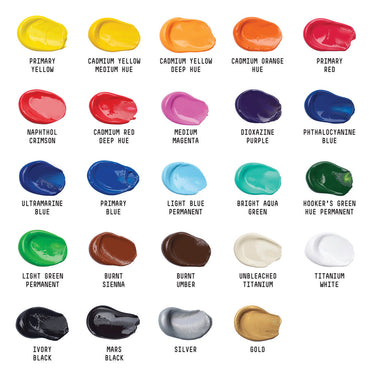
![LQX BASICS 24X22ML PAINT SET 887452028543 [FRONT]](http://www.liquitex.com/cdn/shop/files/80833_375x375_crop_center.jpg?v=1706780423)